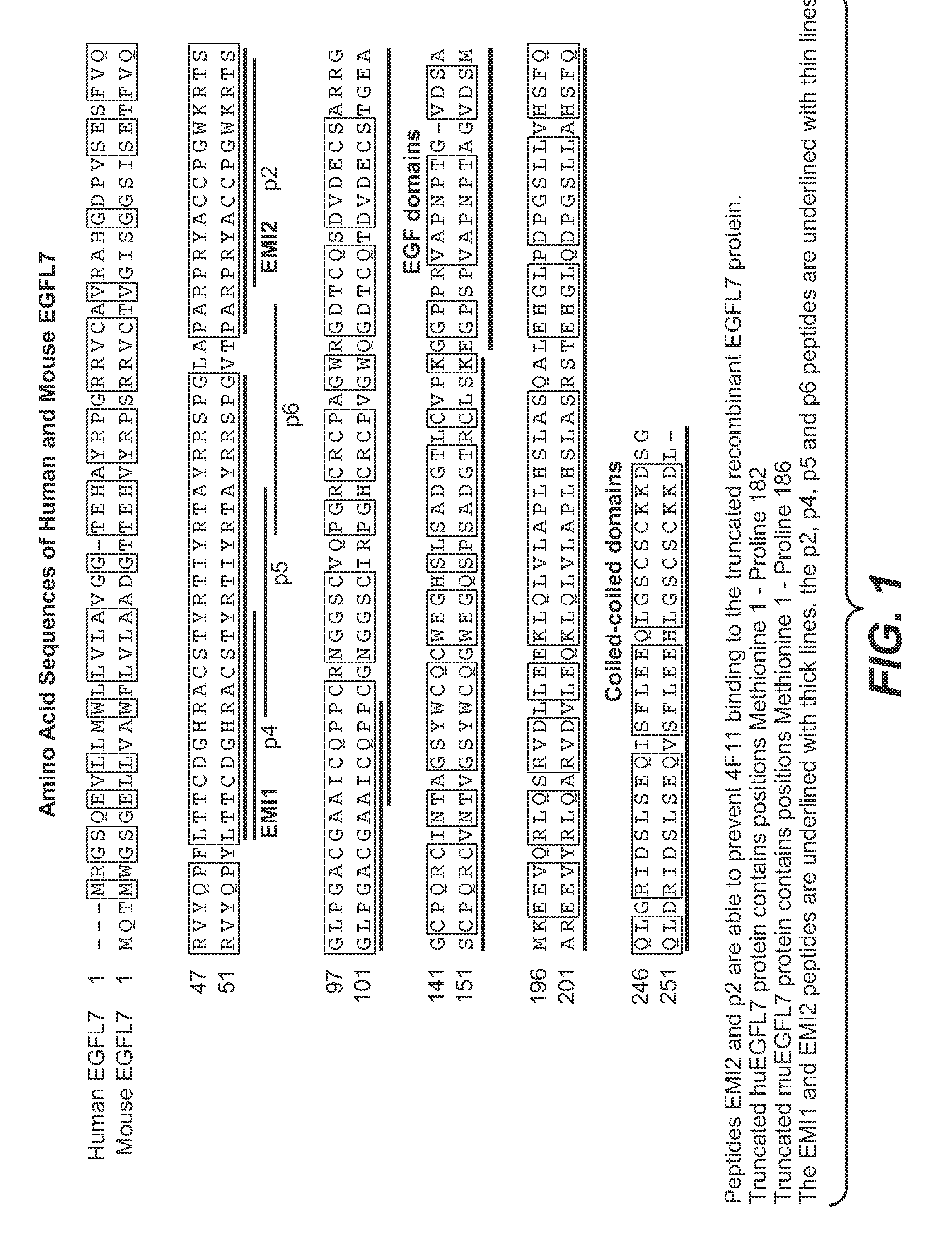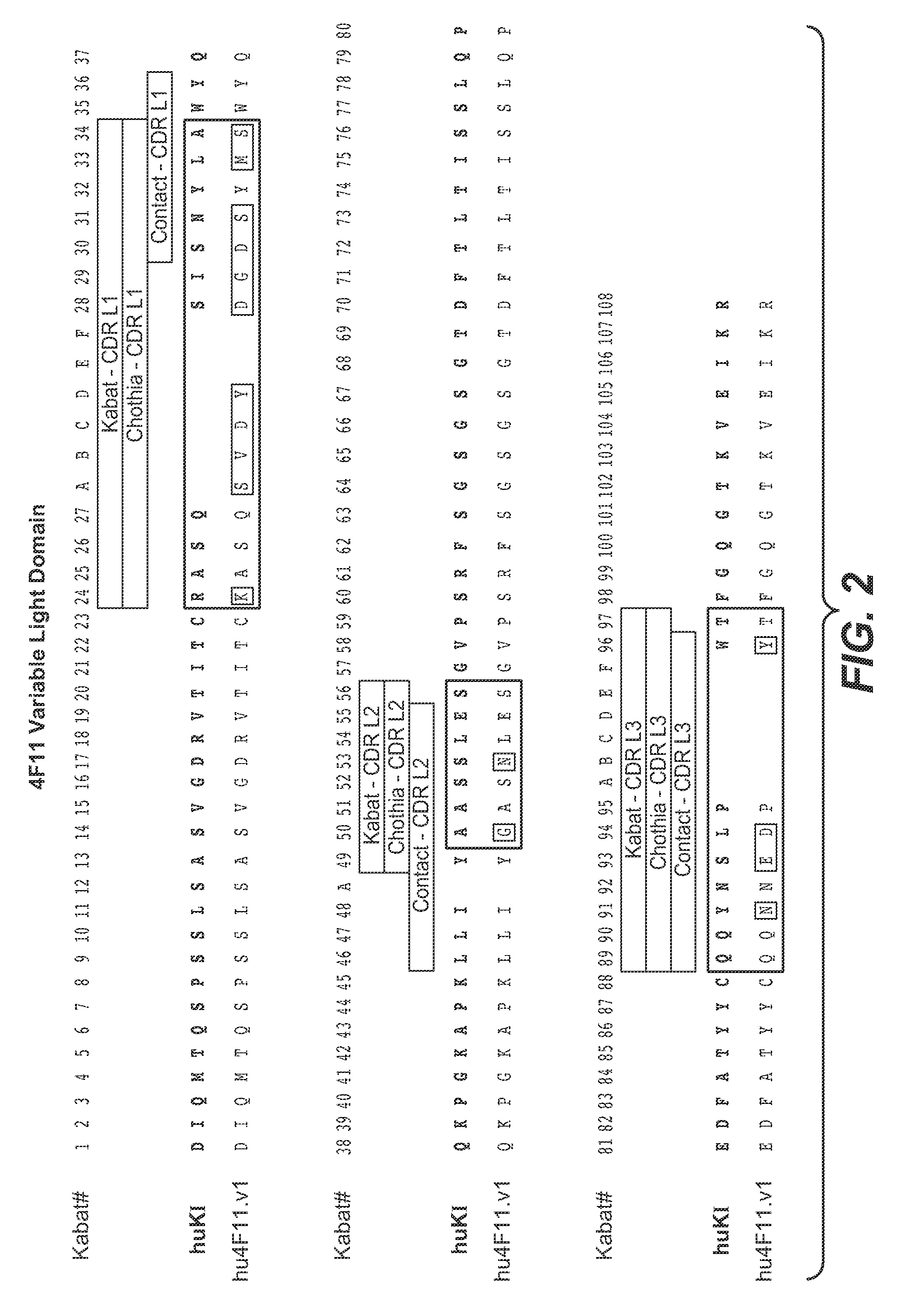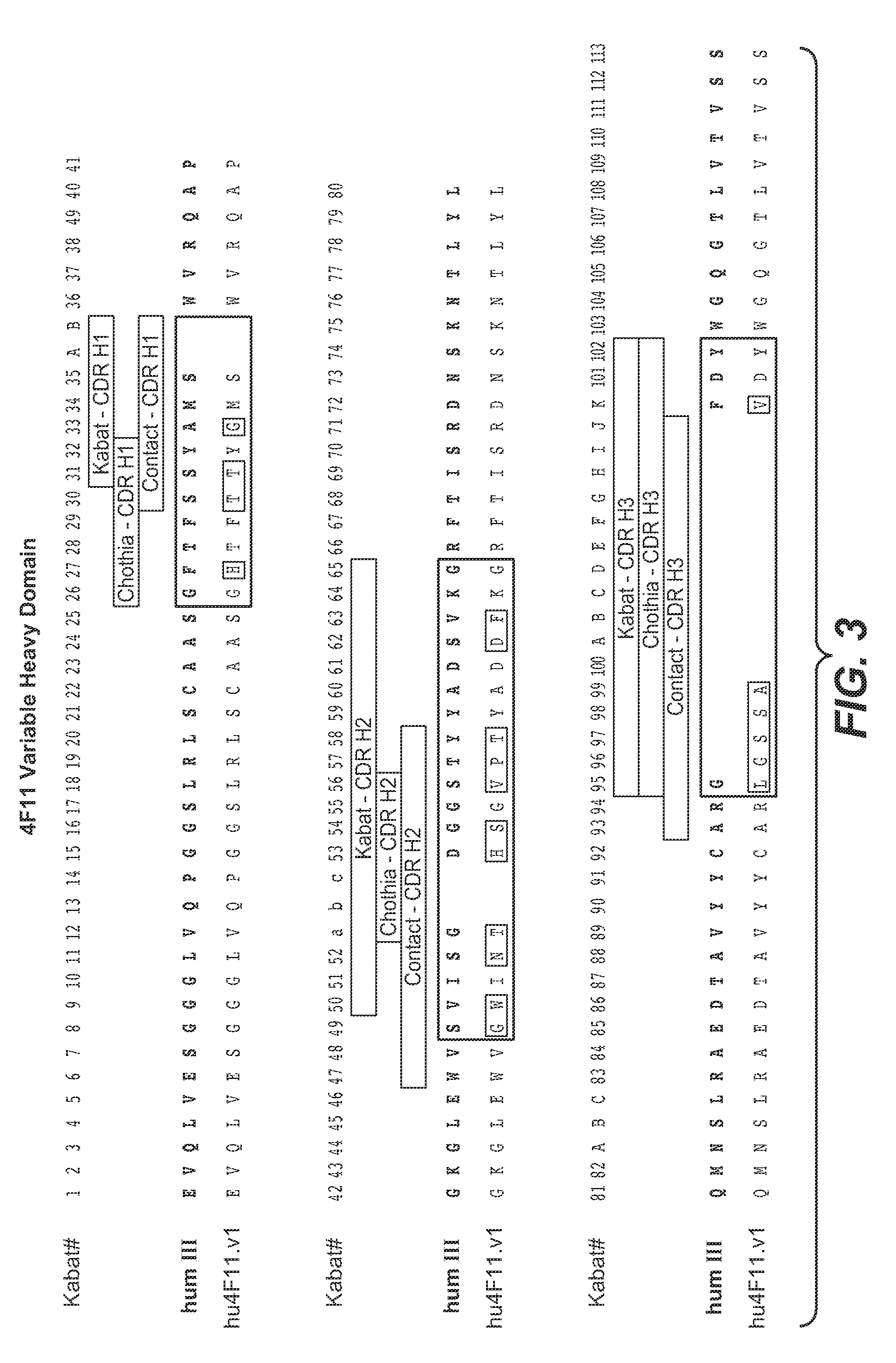Humanized Anti-egfl7 antibodies and methods using same
a technology of anti-egfl7 and humanized antibodies, applied in the field of molecular biology, can solve the problems of poorly defined steps during vessel tube formation, and achieve the effects of enhancing the effect of an anti-angiogenesis agent, and reducing or inhibiting angiogenesis
- Summary
- Abstract
- Description
- Claims
- Application Information
AI Technical Summary
Benefits of technology
Problems solved by technology
Method used
Image
Examples
example 1
Generation of Humanized mu4F11 Antibodies
[0396]This example demonstrates the humanization of the murine antibody 4F11 (mu4F11) directed against EGFL7. Residue numbers are according to Kabat (Kabat et al., Sequences of proteins of immunological interest, 5th Ed., Public Health Service, National Institutes of Health, Bethesda, Md. (1991)). Single letter amino acid abbreviations are used.
Materials and Methods
[0397]Full length human EGFL7 and a truncated form of human EGFL7 (residues 1-182) containing the EMI and 2 EGF domains (lacking the 2 coiled-coiled domains) were expressed in CHO cells and purified by conventional means (FIG. 1). Peptides containing the 4F11 epitope on EGFL7 called p2 (RPRYACCPGWKRT; SEQ ID NO: 5) and EMI2 (PARPRYACCPGWKRTSGLPGACGAAICQPP; SEQ ID NO: 4) were made synthetically.
[0398]A hybridoma expressing the murine antibody 4F11 was obtained by immunizing Egfl7 knockout mice with recombinant full length human EGFL7 protein expressed in E. coli and refolded. Antibo...
example 2
Generation of Humanized mu18F7 Antibodies
[0424]This example demonstrates the humanization of the murine antibody 18F7 (mu18F7) directed against EGFL7. Residue numbers are according to Kabat (Kabat et al., Sequences of proteins of immunological interest, 5th Ed., Public Health Service, National Institutes of Health, Bethesda, Md. (1991)). Single letter amino acid abbreviations are used.
Materials and Methods
[0425]Full length human EGFL7 and a truncated form of human EGFL7 (residues 1-182) containing the EMI and 2 EGF domains (lacking the 2 coiled-coiled domains) were expressed in CHO cells and purified by conventional means (FIG. 1). Peptides containing the 18F7 epitope on EGFL7 called p5 (RACSTYRTIYRTA; SEQ ID NO: 7) and EMI1 (LTTCDGHRACSTYRTIYRTAYRRSPG; SEQ ID NO: 3) were made synthetically.
[0426]A hybridoma expressing the murine antibody 18F7 was obtained by immunizing Egfl7 knockout mice with recombinant full length human EGFL7 protein expressed in E. coli and refolded. Antibodies...
example 3
Treatment of Tumor-Bearing Mice or Neonatal Mice with Humanized Anti-EGFL7 Antibody
[0448]We investigated the ability of humanized anti-EGFL7 antibodies of the invention (alone and in combination with anti-VEGF therapy) to inhibit angiogenesis and / or tumor growth in a variety of models. We observed anti-EGFL7 antibodies enhance the efficacy of anti-VEGF therapy.
[0449]HRLN female nu / nu mice were injected subcutaneously with 1×107H1299 human non-small cell lung cancer tumor cells and allowed to develop tumors to 80-120 mm3. Tumor-bearing mice were then randomly separated into four groups (12 mice each) so that the average tumor size in each group was 122 mm3. These mice were then treated as follows: Group 1: intraperitoneal (ip) injection of anti-VEGF antibody (B20-4.1; WO2005 / 012359 and WO2005 / 044853) once per week at 10 mg / kg; Group 2: ip injection of a negative control antibody anti-ragweed IgG once per week at 10 mg / kg and anti-EGFL7 antibody (hu18F7.v6K) twice per week at 10 mg / kg...
PUM
| Property | Measurement | Unit |
|---|---|---|
| concentrations | aaaaa | aaaaa |
| concentrations | aaaaa | aaaaa |
| dissociation constant | aaaaa | aaaaa |
Abstract
Description
Claims
Application Information
 Login to View More
Login to View More - R&D
- Intellectual Property
- Life Sciences
- Materials
- Tech Scout
- Unparalleled Data Quality
- Higher Quality Content
- 60% Fewer Hallucinations
Browse by: Latest US Patents, China's latest patents, Technical Efficacy Thesaurus, Application Domain, Technology Topic, Popular Technical Reports.
© 2025 PatSnap. All rights reserved.Legal|Privacy policy|Modern Slavery Act Transparency Statement|Sitemap|About US| Contact US: help@patsnap.com



